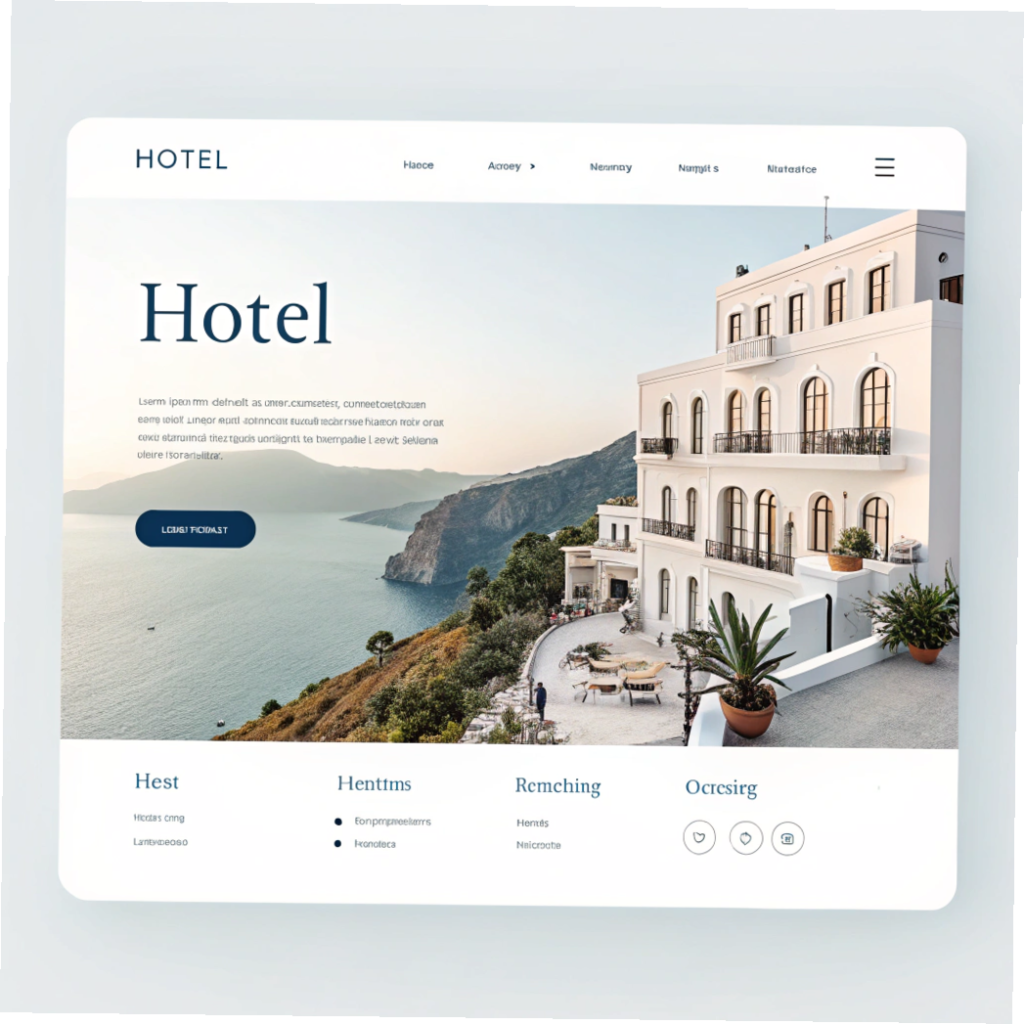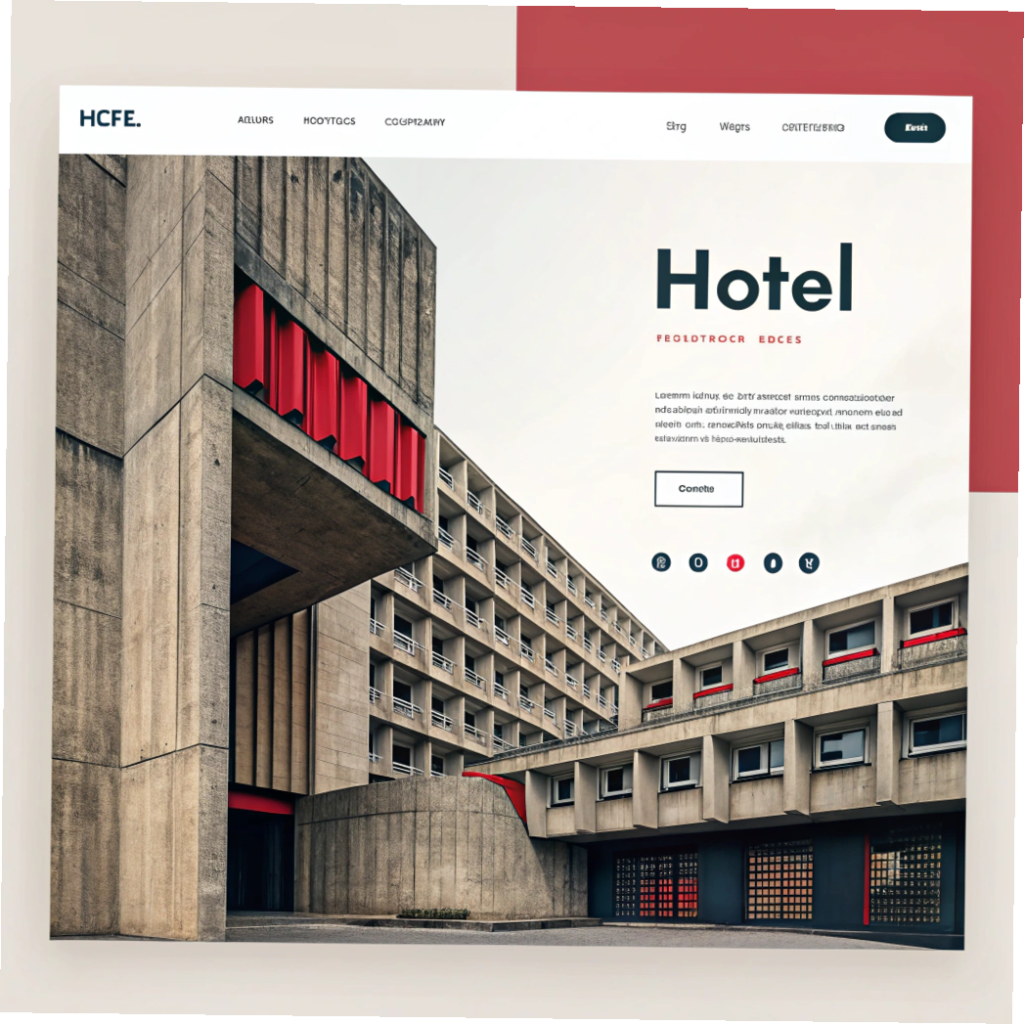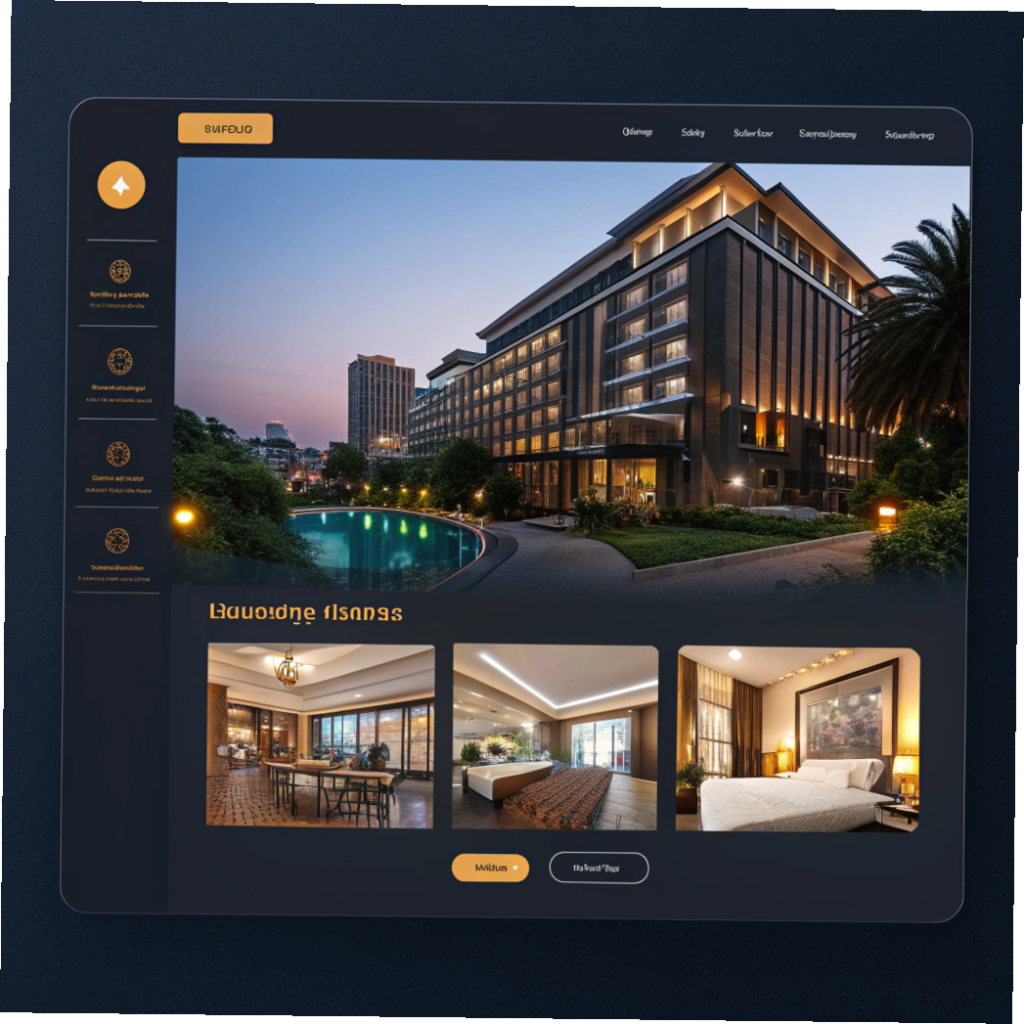Hotel Website Design 2025: What Works and What Doesn’t Work
In the fast-evolving digital landscape, hotel website design 2025 plays a pivotal role in attracting and converting guests. As travelers increasingly rely on seamless online experiences, outdated designs risk losing bookings to competitors. This guide explores the latest trends shaping hotel website design in 2025. Whether you’re redesigning your site or optimizing for conversions, these strategies will ensure your hotel website meets 2025’s standards—and keeps guests booking.
1. Minimalism and Focus on Key Elements

Minimalism in design remains one of the top trends. Users appreciate simplicity and intuitiveness. A hotel website should be easy to perceive, with a clear structure and a minimum number of distracting elements.
What works:
- Use white space to highlight key elements such as a booking button or special offers.
- Simplify navigation: the user should be able to find the information they need in 2-3 clicks.
- Emphasize CTAs (Call-to-Action): Bright and clearly labeled “Book Now” or “Check Availability” buttons increase profits.
Which doesn’t work anymore:
- Overloaded menus with dozens of sub-sections.
- Texts that require scrolling several screens down.
- Distracting animations that slow down page loading.
Example: Marriott hotels use a minimalistic design with an emphasis on room photos and easy navigation to make the booking and reservation system process quick and enjoyable.

2. Neo-Brutalism: Boldness and Simplicity
Neo-Brutalism is a trend that combines minimalism and bold visual solutions. It is ideal for hotels that want to stand out from the competition.
What works:
- Contrasting colors: Black, white and bright accents (such as orange or yellow) create a dynamic design.
- Geometric shapes: Clear lines and angles add to the site’s modernity.
- Large Fonts: Using large, bold fonts for headlines attracts attention.
Which doesn’t work anymore:
- Too soft and pastel colors with no accents.
- Designs overloaded with details.
Example: Hotels like Mama Shelter use neo-brutalism to emphasize their uniqueness and modernity.
3. Typography as a Branding Tool
Fonts are more than just a means of conveying information. They shape the character of your brand and influence the user experience.
What works:
- Modern sans serif fonts: They look modern and are easy to read on all devices.
- Contrasting headlines: Using large, bold fonts for headlines helps attract attention.
- Limited font palette: No more than two or three fonts for the entire site to maintain design integrity.
Which doesn’t work anymore:
- Complex handwritten fonts that are difficult to read.
- Excessive use of italics or fonts that are too small.
Example: The Ritz-Carlton uses elegant fonts with clean lines that emphasize the luxury of the brand.
Interesting fact: A Google Fonts study shows that text reading time increases by 20% if the font is difficult to read.

4. Dark Mode: Style and Convenience
Dark mode is becoming increasingly popular not only in apps but also on websites. It not only looks stylish, but also reduces eye strain.
What works:
- Dark background with bright accents: White or light text on a dark background creates contrast and improves readability.
- Animations: Minimalistic animations, such as the smooth appearance of elements, add dynamics to the site.
- Photos: Dark mode emphasizes high-quality images, making them more expressive.
Example: Hotels such as The Hoxton use dark mode to create an atmosphere of luxury and comfort.

5. Emphasis on Naturalness: Natural Motifs
In 2025, users are increasingly choosing hotels that offer a connection to nature. This trend is also reflected in the design of websites.
What works:
- Natural textures: Wood, stone, sand and other natural materials in the design convey an atmosphere of comfort.
- Natural colors: Green, blue, sand and brown shades create a sense of harmony.
- Nature photos: Views of mountains, ocean or forest add emotional depth.
Which doesn’t work anymore:
- Cold, artificial colors such as neon blue or bright purple.
- Lack of connection to the environment in design.
Interesting fact: According to Booking.com, 75% of travelers prefer eco-friendly hotels, and this trend is reflected in their visual preferences.
6. Interactive content
Static text and images no longer attract attention. In 2025, guests expect to interact interactively with the website.
What needs to be done:
- Add interactive elements such as booking engine calculators (e.g.price estimators), quizzes or surveys.
- Use animations and micro-interactions to make the site more lively.
- Implement chatbots with AI for instant booking assistance.
Example: Hyatt hotels use interactive maps that allow guests to select a room with a view of a particular landmark.
Conclusion
Hotel website design in 2025 is not just a pretty picture, but a tool that helps attract and retain guests. Minimalism, personalization, immersive technologies are the key trends that will determine the success of your website. If you want to stay on trend and offer your guests a unique experience, start implementing these elements today.
Interesting fact: According to McKinsey, companies that pay attention to design show 32% higher revenue growth than their competitors. Make sure your website meets today’s standards to stay competitive in 2025.
If you need help creating a modern and effective website for your hotel, contact the experts at Zorka Solutions. We will help you create a design that will not only attract guests, but also increase conversion rates.